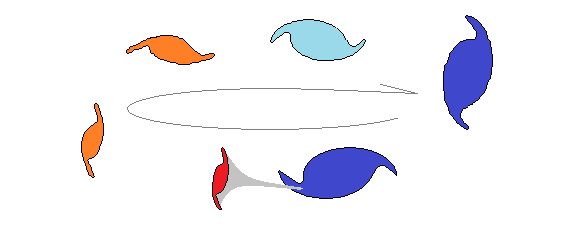From experience, we know that all but the simplest of processes are irreversible. Once a log of wood has been burned in a fire, it cannot be put back together again. Fuel spent to drive a car from one place to another is lost in the process. The list of irreversible processes is endless.
There is an inherent tendency of matter to spend useful energy in an irreversible manner, and proponents of the eternal universe need to address this problem.
One way around the entropy problem is to give matter itself a life cycle.
If matter is something with a limited lifespan, we have a way around the problem.
In defense of such a position, we have Halton Arp's intrinsic red-shift and his ideas regarding matter and mass condensation.
Galaxy with a dying region giving birth to a quasar, which matures into a galaxy
We can imagine matter as something born from radiation. Something that becomes gradually more heavy over time until it collapses back into radiation.
With no energy ever lost due to the self contained nature of the universe, we have a perfect cycle. There is no dead end, only endless cycles of birth, growth and death.
Entropy becomes a non-issue as far as the universe is concerned because all its processes are ultimately reversible through death and re-birth of matter.

No comments:
Post a Comment